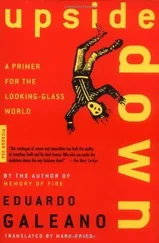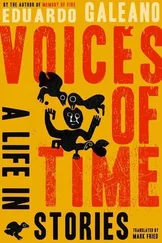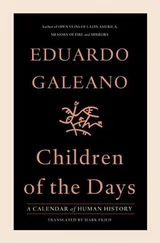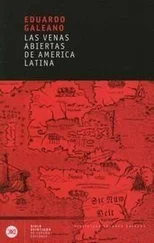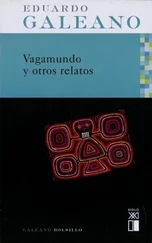Dionysus took pity on him and dunked him in the Pactolus River.
From that point on, the river had a golden bed, and Midas, who lost his magic touch but saved his life, had donkey’s ears poorly hidden under a red bonnet.
ORIGIN OF CONCENTRATION CAMPS

When Namibia won its independence in 1990, the main avenue of the capital city still bore the name Göring. Not for Hermann, the Nazi, but in honor of his father, Heinrich Göring, one of the perpetrators of the first genocide of the twentieth century.
That Göring, who represented the German Empire in the southwest corner of Africa, kindly approved in 1904 an annihilation order given by General Lothar von Trotta.
The Hereros, black shepherds, had risen up in rebellion. The colonial authorities expelled them all and warned that any Herero found in Namibia, man, woman, or child, armed or unarmed, would be killed.
Of every four Hereros, three were killed, by cannon fire or the desert sun.
The survivors of the butchery ended up in concentration camps set up by Göring. And Chancellor Bernhard von Bülow pronounced for the very first time the word “Konzentrationslager.”
The camps, inspired by a British forerunner in South Africa, combined confinement, forced labor, and scientific experimentation. The prisoners, emaciated from a life in the gold and diamond mines, served as human guinea pigs for research into inferior races. In those laboratories worked Theodor Mollison and Eugen Fischer, who later became the teachers of Josef Mengele.
Mengele carried forth their work as of 1933, the year that Göring the son set up the first concentration camps in Germany, following the model his father pioneered in Africa.

While every movie revolver blasted more bullets than a machine gun, the real towns where Westerns were set were makeshift little places, where yawns drowned out any shooting on the sound track.
Cowboys, those taciturn gents on horseback riding tall through the universe rescuing damsels in distress, were starving peons with no more female company than the cattle they drove through the desert, risking their lives for a pittance. They looked nothing like Gary Cooper or John Wayne or Alan Ladd, because they were black or Mexican or toothless whites who never knew the marvels of makeup.
And the Indians, condemned to working as extras in the role of the worst of the bad guys, were nothing like those feathered, war-painted, inarticulate retards who howled as they circled the stagecoach and peppered it with arrows.
The epic of the Wild West was the invention of a handful of immigrants from Eastern Europe with a keen eye for business. In the studios of Hollywood, Carl Laemmle, William Fox, the Warner brothers, Louis B. Mayer, and Adolph Zukor cooked up the most successful universal myth of the twentieth century.

In the eighteenth century, the colony of Massachusetts paid a hundred pounds sterling for every Indian scalp.
After the United States became independent, scalps were priced in dollars.
In the nineteenth century, Buffalo Bill Cody was crowned the greatest scalper of Indians and greatest exterminator of the buffalo that gave him his name and his fame.
Not long after the sixty million buffalo had been reduced to less than a thousand, and hunger had driven the last rebellious Indians to turn themselves in, Buffalo Bill took his grand show, the Wild West Circus, on a world tour. In a new city every two days, he rescued stagecoaches harried by savages, broke indomitable colts, and shot bullets that split a fly down the middle.
The hero interrupted the tour to spend the first Christmas of the twentieth century with his family.
Surrounded by loved ones and in the warmth of his home, he raised his glass, offered a toast, took a drink, and fell to the floor, stiff as a board.
In suing for divorce, he accused his wife, Lulu, of trying to poison him.
She confessed to having put something in his drink, but claimed it was a love potion, Dragon’s Blood was the brand, that a Gypsy had sold her.

At thirty-two, baptism by fire. Sitting Bull defends his people against an enemy attack.
At thirty-six, his Indian nation elects him chief.
At forty-one, Sitting Bull sits. In the middle of a battle on the banks of the Yellowstone River, having walked toward the shooting soldiers, he sits down on the ground. He lights his pipe. Bullets zing like wasps. He remains immobile, smoking.
At forty-three, he learns that whites have found gold in the Black Hills, on lands reserved for the Indians, and their invasion has already begun.
At forty-four, during a long ritual dance, he has a vision: thousands of soldiers fall like grasshoppers from the sky. That night a dream tells him: “Your people will defeat the enemy.”
At forty-five, his people defeat the enemy. The Sioux and the Cheyenne, united, give General George Custer and his troops a tremendous thrashing.
At fifty-two, following years of exile and prison, he agrees to read a speech in honor of the completion of the Northern Pacific Railroad. At the end of his speech, he sets aside the papers, faces the audience, and says:
“I hate all white people. You are thieves and liars.”
The interpreter translates:
“We give thanks to civilization.”
The audience applauds.
At fifty-four, he gets a job in Buffalo Bill’s show. In the circus ring, Sitting Bull plays Sitting Bull. Hollywood is not yet Hollywood, but tragedy is already being repeated as farce.
At fifty-five, a dream tells him: “Your people will kill you.”
At fifty-nine, his people kill him. Indians wearing police uniforms bring an arrest warrant. In the gun battle, he dies.

Thousands of unburied dead wander the Argentinean pampa. They are the disappeared from the last military dictatorship.
General Jorge Videla and his henchmen used disappearance as a weapon of war on a scale never before seen. He used it, but he did not invent it. A century beforehand, against Argentina’s native peoples, General Julio Argentino Roca employed the same masterpiece of cruelty, which obliges each victim to die and die again and go on dying, while his loved ones lose their minds chasing his elusive shadow.
In Argentina, as in all of the Americas, the Indians were the first disappeared. They disappeared before they even appeared. General Roca called his invasion of Indian lands the “conquest of the desert.” Patagonia was “an empty space,” a kingdom of nothing, inhabited by no one.
After that, Indians continued disappearing. Those who surrendered and gave up their land and everything else were called indios reducidos: reduced to the point of disappearing. And those who did not surrender and were defeated by gunfire and sword blows disappeared into numbers, becoming the nameless dead of military body counts. And their children disappeared too: divvied up as war booty, called by other names, emptied of memory, they became little slaves for the murderers of their parents.

Читать дальше







